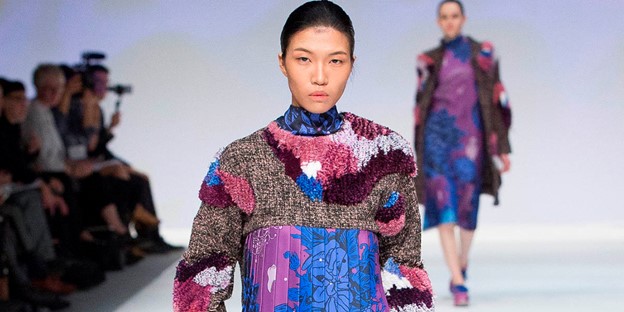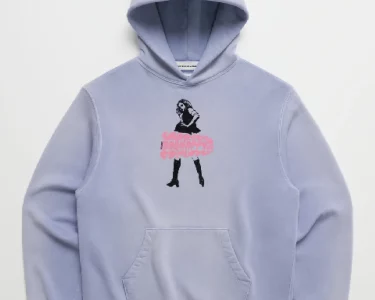As the global fashion industry evolves, there is a growing awareness of the environmental and social impacts of our clothing choices. Sustainable fashion has emerged as a significant movement, aiming to reduce the industry’s footprint and promote ethical practices. This shift towards sustainability in fashion is driven by both consumer demand and the urgent need to address issues such as pollution, waste, and exploitation within the industry. Here’s a look at the key trends in sustainable fashion and practical tips for incorporating eco-friendly choices into your wardrobe.
The Rise of Sustainable Fashion
Sustainable fashion encompasses a range of practices aimed at minimizing the environmental impact of clothing production and consumption. It includes the use of eco-friendly materials, ethical manufacturing processes, and the promotion of circular fashion models, where clothing is designed for longevity, repair, and eventual recycling.
Key Trends in Sustainable Fashion
1. Ethical and Transparent Supply Chains:
Consumers are increasingly demanding transparency about where and how their clothes are made. Brands are responding by adopting more ethical practices, such as fair labor conditions, safe working environments, and fair wages. This trend towards ethical supply chains ensures that fashion is produced without exploiting workers.
2. Eco-Friendly Materials:
The use of sustainable materials is a cornerstone of sustainable fashion. Organic cotton, recycled polyester, Tencel, and hemp are some of the eco-friendly fabrics gaining popularity. These materials reduce the reliance on water-intensive and polluting processes associated with conventional cotton and synthetic fibers.
3. Slow Fashion:
Slow fashion advocates for mindful consumption and quality over quantity. This trend encourages consumers to invest in well-made, timeless pieces that last longer, rather than frequently buying cheap, disposable clothing. By prioritizing durability and classic styles, slow fashion aims to reduce the waste generated by fast fashion cycles.
4. Upcycling and Recycling:
Upcycling and recycling are innovative approaches within sustainable fashion. Upcycling involves repurposing old or discarded items into new garments, while recycling involves breaking down existing materials to create new fibers. Both methods help reduce textile waste and promote a circular fashion economy.

5. Secondhand and Vintage Fashion:
The popularity of secondhand and vintage fashion is on the rise, driven by platforms like Depop, Poshmark, and thrift stores. Buying pre-loved clothing extends the life of garments and reduces the demand for new production, thereby lessening the environmental impact of fashion.
6. Minimalist Wardrobes:
The minimalist wardrobe, often referred to as a capsule wardrobe, focuses on owning fewer, high-quality items that can be mixed and matched. This trend aligns with sustainable fashion by encouraging thoughtful purchasing decisions and reducing overconsumption.
Tips for Embracing Sustainable Fashion
1. Choose Quality Over Quantity:
Invest in high-quality pieces that are built to last. Look for well-constructed garments made from durable materials. While these items may have a higher upfront cost, they often save money in the long run by reducing the need for frequent replacements.
2. Opt for Eco-Friendly Fabrics:
When shopping for new clothes, prioritize eco-friendly fabrics. Look for labels that indicate the use of organic cotton, Tencel, hemp, or recycled materials. These fabrics have a lower environmental impact compared to conventional cotton and synthetic fibers.
3. Support Ethical Brands:
Research and support brands that are committed to ethical practices. Many brands now provide transparency about their supply chains, labor practices, and environmental policies. Supporting these brands helps promote a more sustainable and ethical fashion industry.
4. Embrace Secondhand Shopping:
Explore thrift stores, consignment shops, and online platforms for secondhand clothing. Secondhand shopping is an excellent way to find unique pieces while reducing the demand for new clothing production. It also extends the life of existing garments, contributing to a circular fashion economy.
5. Upcycle and DIY:
Get creative with upcycling and DIY projects. Transform old or damaged clothes into something new and stylish. Upcycling not only reduces waste but also allows for personalized, one-of-a-kind fashion statements.
6. Practice Mindful Shopping:
Before making a purchase, ask yourself if you truly need the item and if it aligns with your personal style and wardrobe needs. Avoid impulse buys and focus on building a versatile, cohesive wardrobe that reflects your values and lifestyle.
7. Take Care of Your Clothes:
Properly caring for your clothes can extend their lifespan. Follow care instructions, wash clothes in cold water, and avoid over-drying. Simple practices like repairing small damages and storing clothes properly can keep them looking good for longer.
8. Participate in Clothing Swaps:
Organize or participate in clothing swaps with friends or community groups. Swapping clothes is a fun and sustainable way to refresh your wardrobe without buying new items. It promotes reuse and helps reduce waste.
The Future of Sustainable Fashion
The future of fashion lies in sustainability. As consumers become more aware of the environmental and social impacts of their clothing choices, the demand for sustainable fashion will continue to grow. Innovations in eco-friendly materials, ethical manufacturing, and circular fashion models will drive the industry forward.

Brands that prioritize sustainability and transparency will lead the way, setting new standards for the fashion industry. By making conscious choices and supporting sustainable practices, consumers can play a crucial role in shaping a more sustainable and ethical fashion future.
Conclusion
Sustainable fashion is more than a trend; it is a movement towards a more ethical and environmentally friendly industry. By embracing practices such as choosing quality over quantity, supporting ethical brands, and opting for eco-friendly materials, consumers can significantly reduce their fashion footprint. The shift towards sustainable fashion is not only beneficial for the planet but also promotes a more thoughtful and intentional way of living. As the industry continues to evolve, sustainable fashion will play a pivotal role in creating a more sustainable and responsible future.




